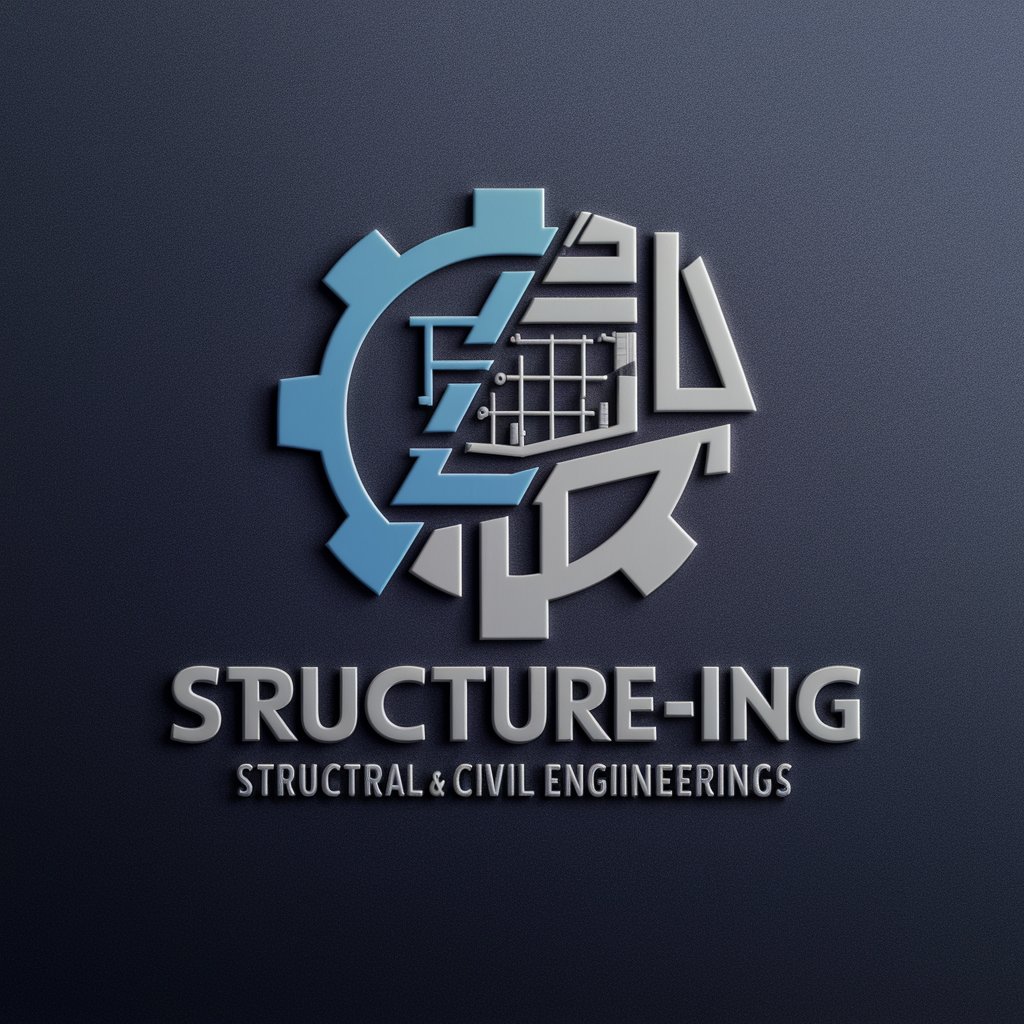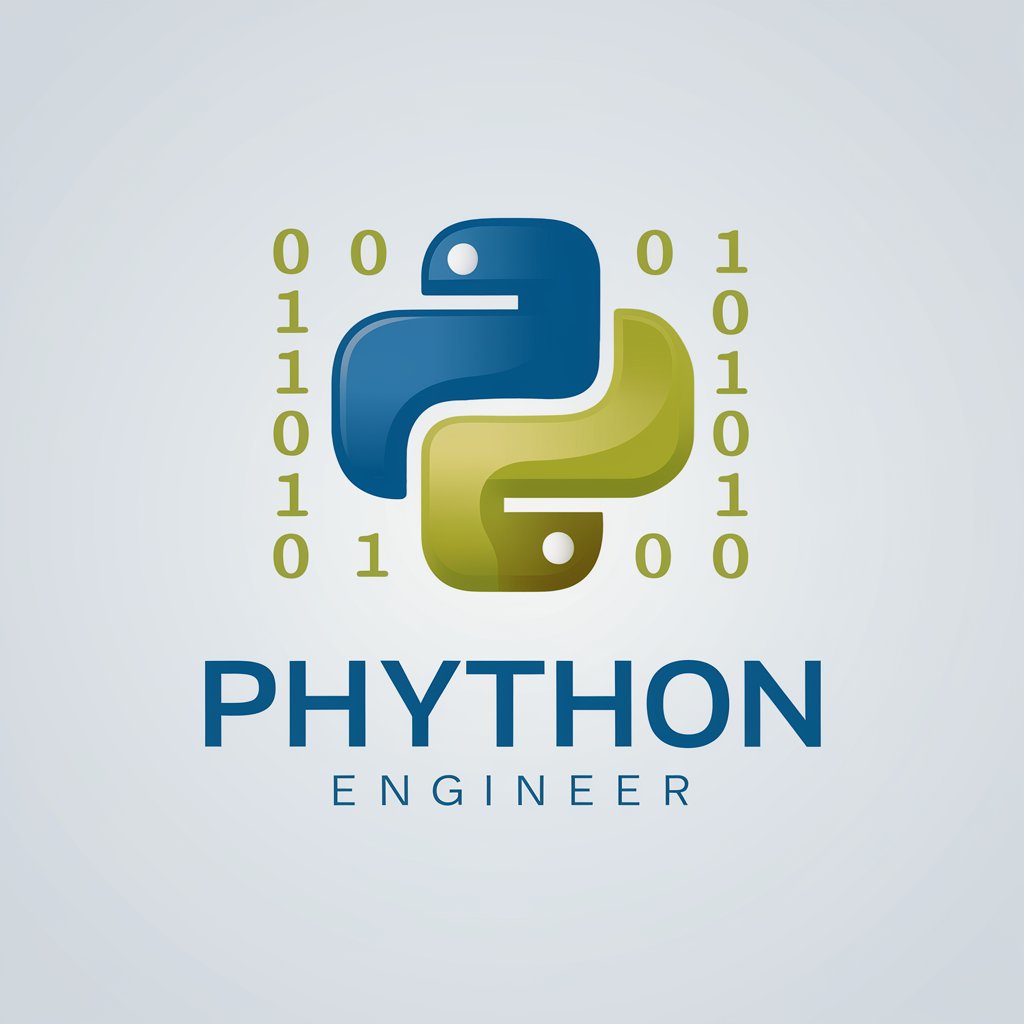Structural Engineering - Structural Engineering Insights

Welcome! Let's solve engineering challenges together.
Empower Your Structures with AI
Explain the process of...
How can I calculate the...
What are the steps to design...
Can you help me understand...
Get Embed Code
Introduction to Structural Engineering
Structural Engineering is a specialized field within civil engineering that focuses on the design, construction, and inspection of load-bearing structures, ensuring they are safe, stable, and capable of withstanding various forces and loads they encounter throughout their use. This includes buildings, bridges, tunnels, dams, and other infrastructures. Structural engineers assess the different stresses and pressures imposed by environmental conditions, human use, and natural disasters on these structures to determine the best materials and design principles to use. For example, the design of a skyscraper in a seismically active area incorporates specific structural reinforcements to withstand earthquakes, while a bridge design accounts for dynamic loads from traffic, wind, and potential seismic activity. Powered by ChatGPT-4o。

Main Functions of Structural Engineering
Load Analysis
Example
Calculating the load-bearing capacity of a bridge to ensure it can safely handle heavy traffic and environmental stresses.
Scenario
In the design phase of a new bridge, structural engineers use load analysis to determine the maximum loads the bridge can support, including the weight of the bridge itself, vehicles, pedestrians, and environmental forces such as wind and earthquakes.
Material Selection and Design
Example
Choosing the appropriate materials and design for a high-rise building to ensure structural integrity and efficiency.
Scenario
For a new high-rise office building project, structural engineers select materials like steel and reinforced concrete for their strength, durability, and flexibility. They design the building's framework to support not only the weight of the building but also the dynamic forces it will face, like wind shear and thermal expansion.
Safety and Compliance Inspections
Example
Inspecting an old building to assess its structural health and compliance with current building codes.
Scenario
A structural engineer is tasked with assessing an historic building to determine if it meets current safety standards. This might involve evaluating the building's foundation, load-bearing walls, and overall condition to recommend necessary upgrades or repairs to ensure safety and compliance.
Earthquake Engineering
Example
Designing buildings and structures to withstand seismic forces in earthquake-prone areas.
Scenario
In regions susceptible to seismic activity, structural engineers incorporate earthquake engineering principles into their designs. This could involve using base isolation systems that allow a building to move independently of ground motion during an earthquake, reducing the risk of structural damage.
Ideal Users of Structural Engineering Services
Construction Companies
Construction firms rely on structural engineers to ensure that their projects are designed and built to meet all safety standards and regulations. They benefit from structural engineering services by minimizing the risk of structural failures, which can lead to costly repairs and safety hazards.
Government Agencies
Government bodies responsible for public infrastructure projects, such as highways, bridges, and public buildings, use structural engineering services to ensure these structures are safe for public use and capable of enduring environmental stresses and disasters.
Real Estate Developers
Developers investing in residential, commercial, and industrial properties need structural engineers to design safe and efficient buildings that meet the specific needs of their projects, ensuring long-term value and compliance with building codes.
Architects
Architects collaborate with structural engineers to integrate architectural vision with structural integrity. This partnership ensures that the aesthetic and functional aspects of a building are supported by a sound structural design, allowing for innovative and ambitious architectural projects.

How to Use Structural Engineering
1
Start your journey by heading to yeschat.ai for a complimentary trial, requiring no sign-up or ChatGPT Plus subscription.
2
Identify the structural engineering problem you need assistance with, whether it's related to design, analysis, or construction.
3
Utilize the provided tools and resources to input your project's specifications, such as dimensions, materials, and load requirements.
4
Review the generated solutions, including detailed calculations, diagrams, and recommendations for your structural engineering challenges.
5
Apply the provided insights and solutions to your project, and don't hesitate to experiment with different scenarios for optimal results.
Try other advanced and practical GPTs
Control Engineering Tutor
Empowering Your Control Engineering Journey with AI

Engineering Genius
AI-powered Engineering Insights

Structural engineering
Optimizing structures with AI precision.

Engineering Phython
Empowering your Python code with AI.

Geotechnical Engineering
Groundbreaking AI for Earth Engineering

Software Engineering
Engineering software, powered by AI

Tennis Central
Ace Your Tennis Game with AI Insights

Motivation Central
Empower your creativity with AI

Hoops Central
Elevate your game with AI-powered basketball intelligence.

Comedy Central
Laugh More, Worry Less with AI Comedy

MEME Central
Unleash creativity with AI-powered memes.

Podcast Central
Elevate your podcast with AI-powered insights.

Frequently Asked Questions about Structural Engineering
What types of structural engineering problems can this tool solve?
This tool is equipped to handle a wide range of structural engineering problems, from simple beam calculations to complex structural analysis, including load distribution, stress and strain evaluation, and material optimization.
Can this tool assist with structural design for specific materials?
Yes, it provides detailed analysis and recommendations for various materials such as steel, concrete, timber, and composite materials, taking into account their unique properties and standards.
How does this tool incorporate modern engineering standards?
The tool stays updated with the latest engineering standards and codes, ensuring that all solutions and recommendations are compliant with current regulations and best practices.
Is this tool suitable for both students and professionals?
Absolutely, it's designed to cater to a wide audience, from engineering students seeking to understand basic concepts to professionals working on advanced projects, offering scalable solutions for all levels of expertise.
How can I maximize the benefits of using this tool for my projects?
To get the most out of the tool, clearly define your project's requirements, explore various scenarios using the tool's capabilities, and apply the insights gained to optimize your design or solution for efficiency and safety.
